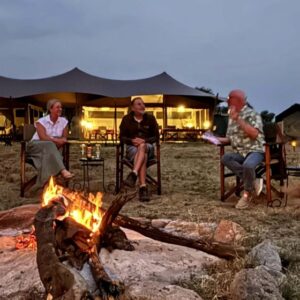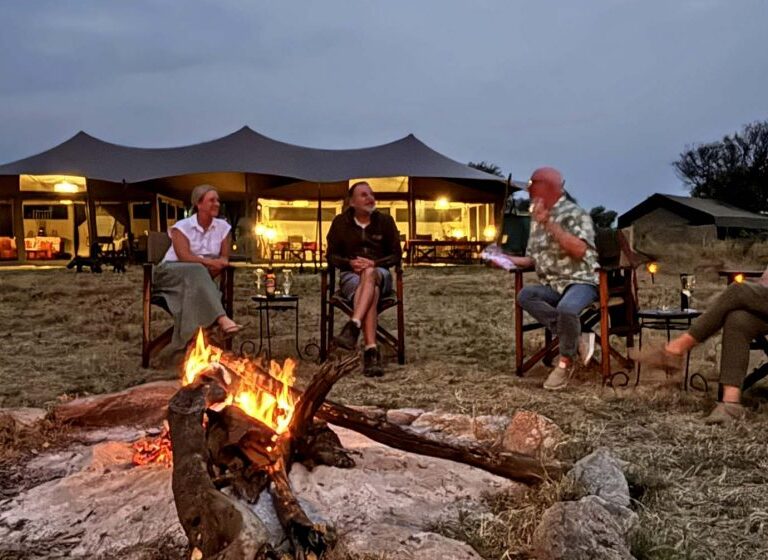The best time to see the Great Migration in Tanzania is during the dry season, typically from July to early October. This is when the wildebeest are in the northern Serengeti, and you have the best chance of witnessing iconic river crossings, particularly at the Mara River. The Great Migration is one of nature’s most extraordinary spectacles — a continuous, awe-inspiring journey of over 1.5 million wildebeest, accompanied by hundreds of thousands of zebras and gazelles, across the vast savannahs of Tanzania’s Serengeti and Kenya’s Maasai Mara. Driven by ancient instinct and the unrelenting pursuit of water and fresh grazing, the migration unfolds in a never-ending loop through the year.
For travelers seeking to witness this epic event, timing is everything. The migration offers dramatically different scenes depending on the month, from tender moments of birth to adrenaline-pumping river crossings best time to see the Great Migration in Tanzania. Here’s a seasonal guide to help you plan your Great Migration safari and ensure you’re at the right place at the right time.
January – March: The Calving Season Continues:
The year begins in the southern Serengeti and Ndutu plains, where the grasses are lush and life begins anew. This is the heart of the calving season — a period of rebirth and vulnerability. From late January through February, the plains witness the arrival of hundreds of thousands of wildebeest calves, born into a world where predators constantly lurk in the shadows.
This is a spectacular time for wildlife viewing. Not only are the open plains dotted with playful newborns, but predators such as lions, hyenas, cheetahs, and jackals are on high alert, capitalizing on the abundance of easy prey. The interactions are raw, real, and emotionally gripping — nature in its most primal form. For photographers and wildlife enthusiasts, this period offers intimate scenes of life and survival, under soft, golden light and wide-open skies.
April to mid-June: Season of the Trek North and The Rut
As the rains fade and the southern plains dry out, the herds begin their great trek northward through the central and western Serengeti. This is a time of movement and transformation — a quieter but essential phase in the cycle.
The wildebeest form long, winding columns as they travel together, the rhythm of their hooves echoing across the savannah. By May, the rut (mating season) begins, and the air buzzes with energy. Males engage in head-to-head clashes and displays of strength to compete for females, adding a fascinating behavioral layer to the spectacle.
Though the herds are not as densely packed as during other seasons, this is still a wonderful best time to visit and see the great migration in Tanzania. The landscapes are emerald green, the skies are dramatic, and the experience is more private due to fewer tourists. It’s a period of beautiful scenery, calm transitions, and mating rituals, all leading up to the drama that lies ahead.
Mid-June to November: Great Migration River Crossing Season
This is the most iconic and thrilling time to witness the Great Migration — a season marked by high-stakes drama, danger, and survival. By mid-June, the wildebeest reach the Grumeti River in western Serengeti, where crocodiles lie in ambush. But it’s the Mara River crossings, beginning in July and peaking in August, that define this phase of the journey. Here, in the northern Serengeti and Maasai Mara, the migration becomes a heart-pounding spectacle.
Thousands of wildebeest gather at the river’s edge, hesitant, sensing the peril in the swirling waters below. And then — chaos. In an eruption of dust and hooves, they leap into the river, battling strong currents and hungry crocodiles, driven by the unyielding need to survive.
August and September are particularly high-impact months for safari-goers, with near-guaranteed action. Game drives here can yield unforgettable moments — mass crossings, dramatic predator hunts, and breathtaking views across golden plains. By October and November, the herds begin moving south once again, the Mara grasses now grazed down, and the call of the rains pulling them back into Tanzania.
December: Calving Season Begins
As the short rains fall, the wildebeest complete their journey back to the southern Serengeti and Ndutu plains. The land begins to green once more, setting the stage for another calving season. December marks the beginning of a new cycle, with pregnant females preparing to give birth. The first calves are born toward the end of the month, bringing with them renewed hope — and once again, the watchful eyes of predators.
This is a quieter, more peaceful time to witness the migration’s gentler side, offering reflective beauty, warm light, and the promise of new beginnings. It’s a wonderful month for those who want to beat the crowds while still witnessing a key moment in the migratory journey.
The Great Migration: A Month-by-Month Journey Through the Wild
The Great Migration is not just an event — it’s a continuous, rhythmic cycle of life, movement, survival, and wonder. Each year, over 1.5 million wildebeest, accompanied by hundreds of thousands of zebras and gazelles, traverse the vast plains of Tanzania’s Serengeti and Kenya’s Maasai Mara in pursuit of fresh grazing lands and water. This migration is guided by the rains and the promise of sustenance, creating one of the most dramatic wildlife spectacles on Earth. Let’s follow their journey, month by month.
January – New Beginnings in the South
As the new year begins, the herds gather in the Ndutu region of southern Serengeti, where the plains are lush and green after the short rains. This is the start of the calving season. Thousands of wildebeest calves are born each day, an explosion of new life across the savannah. But with new life comes danger. Predators like lions, leopards, hyenas, and cheetahs stalk the grasslands, taking advantage of the vulnerable young. Despite the threats, the abundance of food and water makes this a time of growth and renewal.
February – The Peak of Calving
February marks the height of calving season. The southern plains are alive with young wildebeest learning to stand, walk, and run within minutes of birth — a crucial skill when predators are never far away. The short grass provides good visibility for both prey and predator, leading to intense scenes of life-and-death drama. It’s also a time of bonding, with mothers fiercely protecting their newborns as they prepare for the long journey ahead.
March – Preparing to Move
As the month progresses, the rains begin to ease, and the lush grasses start to dry. The herds, having grazed heavily in the south, begin their slow journey northwest. The calves, now stronger, can handle the long walks. The vast, open plains stretch ahead, and though movement is still slow and scattered, the first hints of migration are in the air. The promise of richer pastures urges the herds onward.
April – A Time of Transition
April brings the long rains, and with them, muddy plains and lush grasses in the central Serengeti. The migration gains momentum as the wildebeest continue their trek northward. The herds become larger and more cohesive. This part of the journey is quieter — no river crossings or dramatic scenes — but it is critical. It’s a time of endurance, travel, and preparation for the more dangerous paths to come.
May – Columns on the Move
By May, the migration is in full swing. Massive columns of wildebeest, zebras, and gazelles stretch for miles as they move through the central Serengeti and western corridor, heading toward the Grumeti River. The landscape is vibrant after the rains, and the air is filled with the sounds of hooves and lowing. This is also the mating season, and courtship behavior is visible among the males and females. The journey is long, but instinct drives them forward.
June – First River Challenge
In June, the herds arrive at the Grumeti River. The water is not deep, but it is home to hungry crocodiles lying in wait. This is the first major obstacle on the migration route. The crossings here are tense, though not as dramatic as what lies ahead at the Mara River. The western Serengeti is bustling with activity — predators follow closely, and the migration becomes more condensed, building up to the most iconic phase of the journey.
July – Drama at the Mara River
By July, the wildebeest reach the northern Serengeti and approach the Mara River, the most perilous crossing point of their migration. The herds pause at the riverbanks, sensing the danger in the fast-moving currents and the crocodiles that lie hidden beneath the surface. Then, often without warning, panic erupts — and the wildebeest surge forward in thundering hooves and clouds of dust. Some make it, others do not. This is one of the most spectacular wildlife moments in the world, drawing travelers and photographers from every corner of the globe.
August – Abundance in the Mara
In August, the majority of the herds are now in Kenya’s Maasai Mara, where the grass is tall and plentiful. The river crossings continue as smaller groups catch up. The plains of the Mara are dotted with countless animals, and the predator-prey interactions are at their peak. Lions, cheetahs, leopards, and hyenas stalk the herds relentlessly. For the wildebeest, however, this is a time of relative peace — there is food, space, and a moment to breathe.
September – The Calm After the Storm
As September rolls in, the herds are settled in the Mara region, though river crossings still happen as some move back and forth across the Mara River. The grasses begin to wear thin under the pressure of millions of grazers, and the air starts to dry. The danger hasn’t gone — predators are still lurking — but the frenzy of July and August begins to ease. Still, the migration is always on the move, always adapting to the land’s changing rhythm.
October – Turning South
October brings the beginning of the journey back south. The rains begin again in the southern Serengeti, calling the herds home. Slowly, the wildebeest start moving back across the border into northern Tanzania, retracing their path through the Serengeti. The groups are smaller, more fragmented, and the movement more gradual. This is a quieter time, but it marks the start of the cycle’s return.
November – Back Through the Serengeti
In November, the short rains return to the eastern and central Serengeti, drawing the herds further south. The grasses begin to regrow, offering fresh nourishment. The journey is still long, and scattered herds pass through familiar territories. As the landscape revives, the Serengeti welcomes back its wandering giants. The migration may not be as intense visually during this time, but the movement continues steadily, driven by instinct and survival.
December – Full Circle
By December, the herds return to the Ndutu and southern Serengeti plains — the very place where the cycle began. The grasses are rich and green again after the rains, and once more, the wildebeest prepare to bring new life into the world. Calving season is on the horizon. The circle of life begins again, unbroken, timeless, and awe-inspiring.
When is the Best Time to Go on a Great Migration Safari?
The Great Migration is one of the most spectacular wildlife events on Earth — a year-round journey of over 1.5 million wildebeest, joined by zebras and gazelles, moving through Tanzania’s Serengeti and Kenya’s Maasai Mara. Choosing when to go depends on what kind of experience you’re looking for. From dramatic river crossings to tender calving scenes, every season brings something unforgettable.
Calving Season (February to March): New Life and Predator Action: In the lush southern Serengeti and Ndutu plains, the calving season unfolds with hundreds of thousands of wildebeest calves born each day. It’s a time of new beginnings — and danger. Predators like lions, cheetahs, and hyenas stalk the plains, making this one of the best times to witness intimate wildlife moments and intense predator-prey interaction. For photographers and wildlife lovers, this is a magical time.
Rutting Season (April to May): The Wild Courtship: As the herds begin their journey north, the rutting season kicks off. Males battle for dominance, clashing horns in fierce displays to impress females. The central Serengeti becomes a stage for territorial fights and dramatic mating behavior. While less action-packed than river crossings, this season offers raw energy, fewer crowds, and green landscapes.
Grumeti River Crossings (May to June): Tension Builds: The herds reach the Grumeti River in western Serengeti, where giant crocodiles lie in wait. Though less famous than the Mara crossings, these moments are tense and thrilling. It’s a perfect time for travelers seeking excitement without the crowds, as the migration builds toward its most iconic phase.
Mara River Crossings (July to August): Nature’s Greatest Show: This is the pinnacle of the Great Migration. In northern Serengeti and the Maasai Mara, wildebeest face their biggest challenge — crossing the crocodile-filled Mara River. The scenes are chaotic, emotional, and unforgettable. It’s a high-demand season, ideal for those who want cinematic wildlife action and epic safari drama.
On the Move (November to January): The Return South: As the short rains fall, the herds begin their journey back south, creating sweeping scenes of wildebeest on the move, a complete guide to the great migration in Africa. This is a quieter but visually stunning time, with lush landscapes and fewer tourists. In late December, calving begins again, and the cycle of life continues. Check out the Serengeti Migration | 7 Natural Wonders of Africa.
The Ultimate Guide to the Great Migration: Everything You Need to Know
Witness nature’s grandest spectacle as over 1.5 million wildebeest, zebras, and gazelles journey across Tanzania’s Serengeti and Kenya’s Maasai Mara. From dramatic river crossings to tender calving scenes, the migration is a year-round cycle of survival, movement, and wonder. Whether you’re chasing predator action or peaceful plains, this guide covers the best times to visit, key locations, and unforgettable moments that make the Great Migration a once-in-a-lifetime safari experience. Generally speaking, the Migration is observed as moving from Tanzania’s southern Serengeti, north through the Western Corridor, and up to the Maasai Mara. The animals close the loop, arriving back at their southern Serengeti calving grounds via the Lobo Area or Loliondo Game Controlled Area in Tanzania. Check out the Guide to Great Serengeti Wildebeest Migration.
Where to Go for the Great Migration in Tanzania
The Great Migration in Tanzania is a spectacle where massive herds of wildebeest, zebras, and gazelles migrate across the Serengeti and Maasai Mara ecosystems in search of fresh grazing and water. To see the migration, you need to plan your safari around the time of year when the herds are in a specific location. The best time to witness the migration is from June to October, when the herds are crossing the Mara River. Serengeti National Park: This is the primary location for the Great Migration. Mara River: The most dramatic river crossings occur here between July and October. Grumeti River: Another important river crossing point in the western corridor, particularly in June and July. Ndutu Plains: Southern Serengeti, ideal for calving season. Check out the 8-Day Classic Tanzania Migration Safari.
Where to Stay: Permanent Lodges vs. Mobile Camps on a Migration Safari
When choosing accommodations for a migration safari, consider the charm of permanent lodges versus the adventure of mobile camps. Permanent lodges offer comfort, amenities, and scenic views, perfect for unwinding after a day of wildlife viewing. Conversely, mobile camps provide an immersive experience, placing you closer to the action as herds move across the plains. Each option caters to different tastes, ensuring unforgettable experiences in the heart of nature’s grand spectacle. Choose based on your desire for stability or adventure. Check out 10 Interesting Facts About the Great Wildebeest Migration.
Tips for Choosing Your Migration Safari Accommodation
When choosing accommodation for your migration safari, prioritize proximity to key wildlife areas for optimal viewing. Look for eco-friendly lodges or tented camps that enhance the natural experience. Consider amenities that suit your needs, such as guided tours, dining options, and comfortable sleeping arrangements. Research reviews to ensure quality service and hospitality. Lastly, book in advance during peak seasons to secure your spot and avoid disappointment, ensuring a memorable adventure surrounded by nature’s wonders. Check out River Crossings vs Calving Season of the Great Migration in Tanzania.
Tips for Planning Your Great Migration Safari
Planning your Great Migration safari requires careful timing and research. Aim for peak migration seasons between July and October for the best wildlife sightings. Choose a reputable tour operator who offers guided experiences for safety and insight. Prioritize locations like the Serengeti and Maasai Mara for optimal views. Pack essential gear, including binoculars and appropriate clothing. Lastly, remain flexible with your plans to adapt to wildlife movements, ensuring a captivating and unforgettable adventure amidst nature’s drama.
The Great Migration: What, When, and Where?
The Great Migration is an extraordinary movement of over a million wildebeest, accompanied by zebras and gazelles, across the Serengeti and Masai Mara. Typically occurring from June to October, it features dramatic river crossings and predators in pursuit of the ultimate Guide to the Great Migration in Tanzania. This natural spectacle is driven by the search for fresh grazing pastures and water. Witnessing this breathtaking event offers an unforgettable experience of nature’s raw beauty and the intricate balance of life in the African savannah.
Serengeti wildebeest migration explained with a moving map.
The Serengeti wildebeest migration is a breathtaking spectacle where over a million wildebeests journey across the vast plains in search of fresh grass. Using a moving map, one can trace their path from the Serengeti to the Maasai Mara, highlighting key stops like the Grumeti River crossing outline when to go on your Great Migration Safari. This epic trek, driven by seasonal rains, showcases the resilience of nature as predators lurk, creating a dramatic dynamic between survival and instinct, captivating all who witness this incredible journey.
The Ultimate Guide to the Great Migration in Tanzania
The Great Migration in Tanzania is a breathtaking journey of survival and instinct. Each year, millions of wildebeest, zebras, and gazelles trek across the Serengeti in search of fresh grazing, the ultimate Guide to the Great Wildebeest Migration. This epic cycle, driven by rain and peril, includes dramatic river crossings and the calving season. From the Ndutu plains to the Grumeti River, the migration offers unmatched wildlife encounters. Witnessing it is a once-in-a-lifetime adventure, revealing nature’s raw beauty and untamed rhythm.
How to plan and book a wildebeest migration safari
Research peak migration months (July–October in Kenya, January–March in Tanzania). Choose top parks like the Maasai Mara or Serengeti. Decide on your budget and preferred style—luxury lodge, mobile camp, or budget tour. Book early, ideally 6–12 months in advance. Use a trusted safari operator for tailored itineraries. Secure necessary visas, vaccinations, and travel insurance. Pack light, with neutral clothing and binoculars. Prepare for early game drives and unforgettable wildlife encounters.
7 truly stupendous facts about the Serengeti Great Migration?
The Serengeti Great Migration is nature’s grandest spectacle, where over 1.5 million wildebeest, 200,000 zebras, and thousands of gazelles journey across Tanzania and Kenya. It’s Earth’s largest land migration, spanning 1,200 miles annually. Driven by instinct and rainfall, the herd faces predators, crocodile-infested rivers, and harsh terrain. Newborns—nearly half a million—are born in weeks. The migration sustains entire ecosystems, is visible from space, and has remained unchanged for millennia. It’s a true marvel.








